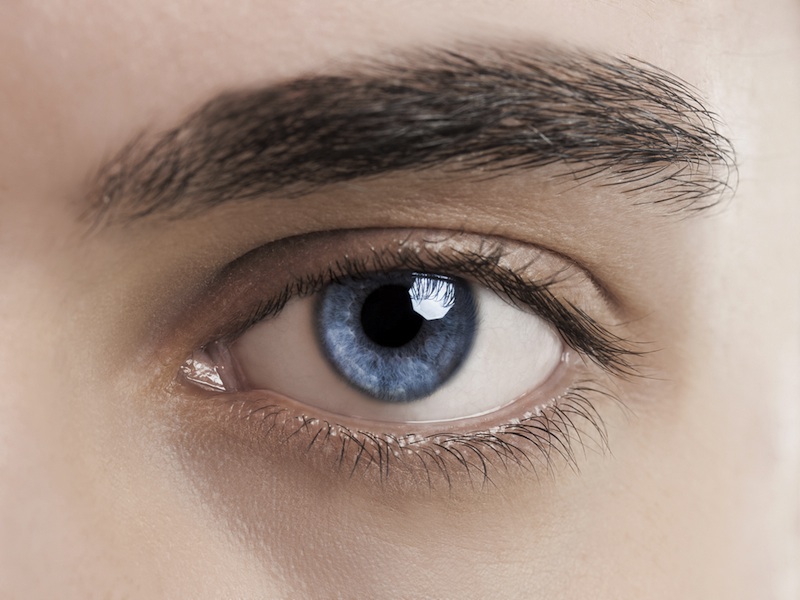Eyes Reveal Sexual Orientation

Whether you're gay, straight or somewhere else on the spectrum, the truth of who attracts you could be in your eyes.
Pupil dilation is an accurate indicator of sexual orientation, a new study finds. When people look at erotic images and become aroused, their pupils open up in an unconscious reaction that could be used to study orientation and arousal without invasive genital measurements.
The new study is first large-scale experiment to show that pupil dilation matches what people report feeling turned on by, said study researcher Ritch Savin-Williams, a developmental psychologist at Cornell University.
"So if a man says he's straight, his eyes are dilating towards women," Savin-Williams told LiveScience. "And the opposite with gay men, their eyes are dilating to men."
The eyes have it
The link between pupil size and arousal goes way back. In 16th-century Italy, women would take eye drops made from the toxic herb Belladona, which kept their pupils from constricting and was thought to bestow a seductive look.
In fact, Savin-Williams said, the pupils dilate slightly in response to any exciting or interesting stimulus, including a loved one's face or a beautiful piece of art. The dilation is a sign that the autonomic nervous system — the system that controls involuntary actions like pulse and breathing — is ramping up.
Sign up for the Live Science daily newsletter now
Get the world’s most fascinating discoveries delivered straight to your inbox.
Traditionally, researchers have studied arousal and sexual orientation by asking volunteers to watch erotic movies or pictures while attached to instruments that measure blood flow to the genitals. For men, this involves a circumference measurement of the penis, while women use a probe that measures pressure change in the blood vessels of the vaginal walls.
These measurements have drawbacks, Savin-Williams said. Some people can suppress their genital arousal, or simply don't have genital responses in a laboratory environment. And then there's the invasiveness issue.
"Some people just don't want to be involved in research that involves their genitals," Savin-Williams said.
Simply asking people if a given stimulus turns them on or not is equally problematic, as people may be ashamed to admit their desires or even deny them to themselves. It's also difficult to ask direct questions about sexual orientation in many cultures, Savin-Williams said. [5 Myths About Gay People, Debunked]
Measuring arousal
To get around these issues, Savin-Williams and his colleague Gerulf Rieger, also of Cornell University, turned to the pupils. They recruited 165 men and 160 women, including gay, straight and bisexual participants. These volunteers watched separate one-minute videos of a man masturbating, a woman masturbating and neutral landscape scenes. The videos were all matched for brightness so that differences in light wouldn't skew the results.
A gaze-tracking camera recorded the pupils during these videos, measuring tiny changes in pupil size. People also reported their own feelings of arousal to each video.
The results showed that pupil dilation matches the pattern seen in genital arousal studies. In men, this pattern is generally straightforward: Straight men respond to sexual images of women, and gay men respond to sexual images of men. Bisexual men respond to both men and women.
In women, things are more complex, Savin-Williams said. Gay women show more pupil dilation to images of other women, similar to the pattern seen in straight men. But straight women dilate basically equally in response to erotic images of both sexes, despite reporting feelings of arousal for men and not women. [6 Gender Myths Busted]
This doesn't mean that all straight women are secretly bisexual, Savin-Williams warned, just that their subjective arousal doesn't necessarily match their body's arousal. Sex researchers aren't sure why this happens. One theory is that because women have been at risk of being raped throughout history, they evolved to respond with lubrication to any sexual stimulus, no matter how unappealing. This idea holds that women who did so were less likely to experience trauma or infection after sexual assault, making it more likely that they would survive to pass on their genes.
The researchers detail their findings today (Aug. 3) in the journal PLoS ONE. The next step, Savin-Williams said, is to look at pupil measurements and genital measurements at the same time, to test how well they correspond.
Eventually, he said, this technology could be used to conduct cross-cultural studies of sexuality, given that pupil dilation is universal and doesn't depend on labels of sexual orientation that may not translate across all languages. The method could even be used to help people who are confused about their sexuality sort through their desires, Savin-Williams said.
Follow Stephanie Pappas on Twitter @sipappas or LiveScience @livescience. We're also on Facebook & Google+.

Stephanie Pappas is a contributing writer for Live Science, covering topics ranging from geoscience to archaeology to the human brain and behavior. She was previously a senior writer for Live Science but is now a freelancer based in Denver, Colorado, and regularly contributes to Scientific American and The Monitor, the monthly magazine of the American Psychological Association. Stephanie received a bachelor's degree in psychology from the University of South Carolina and a graduate certificate in science communication from the University of California, Santa Cruz.










